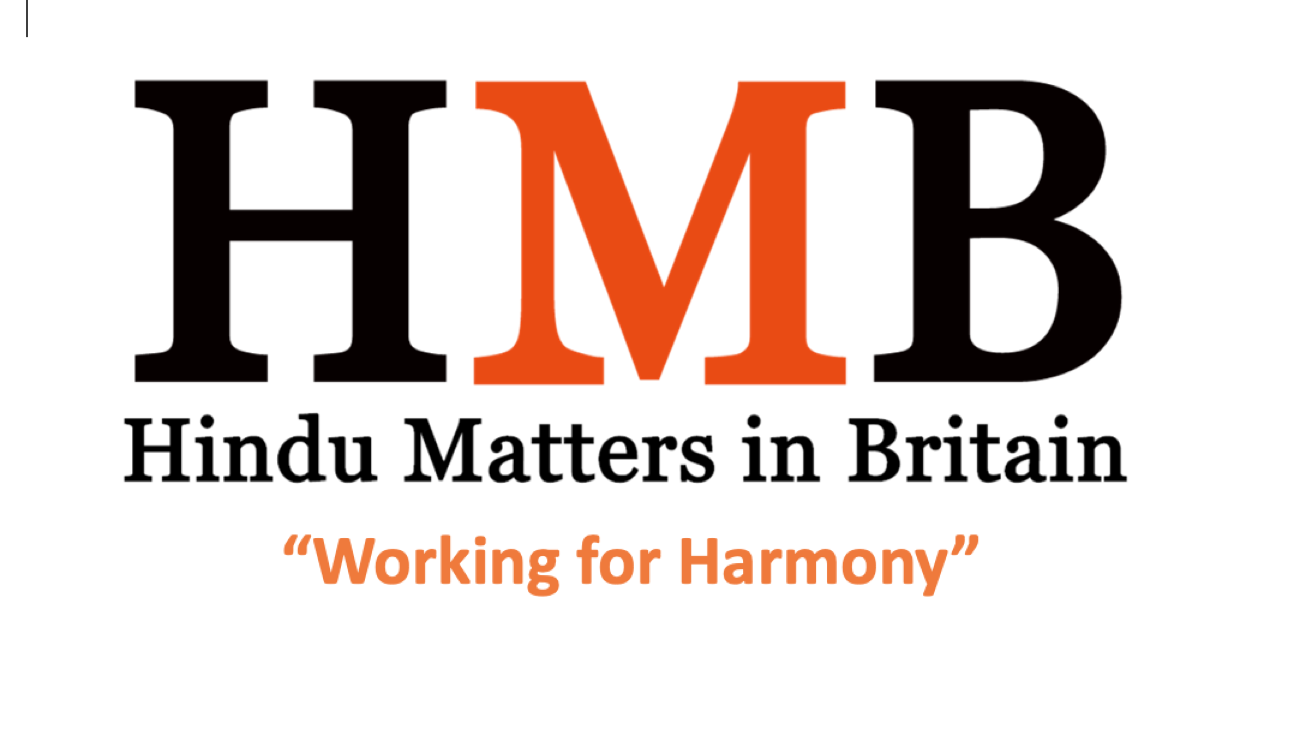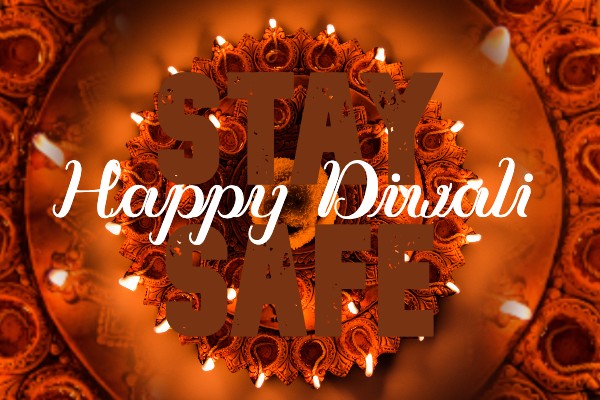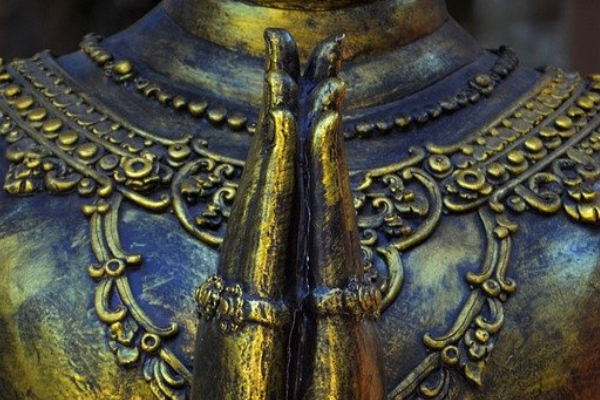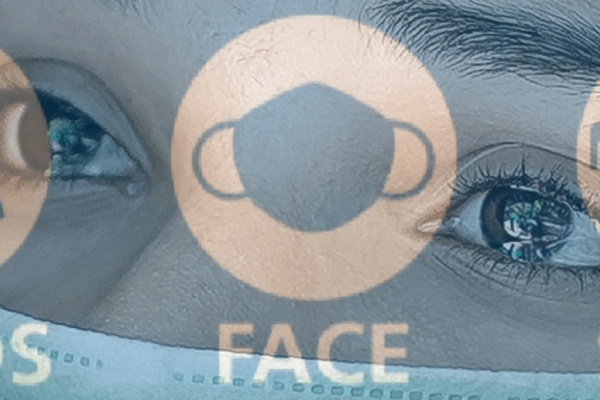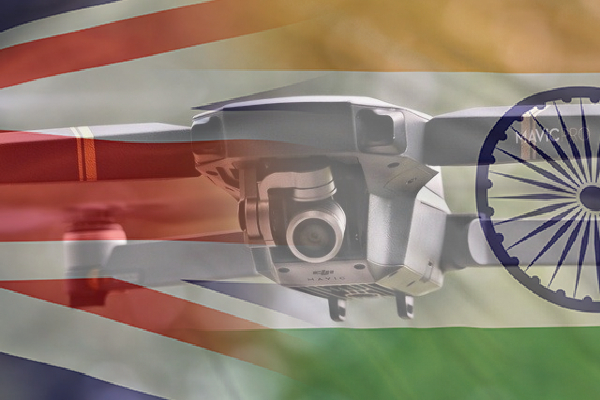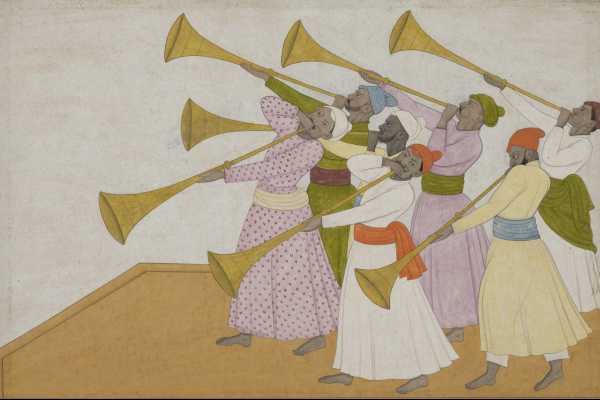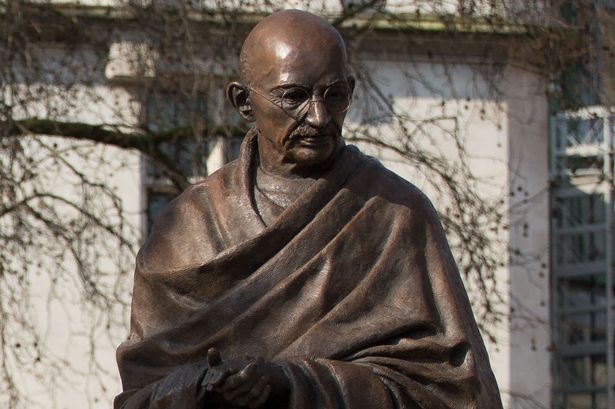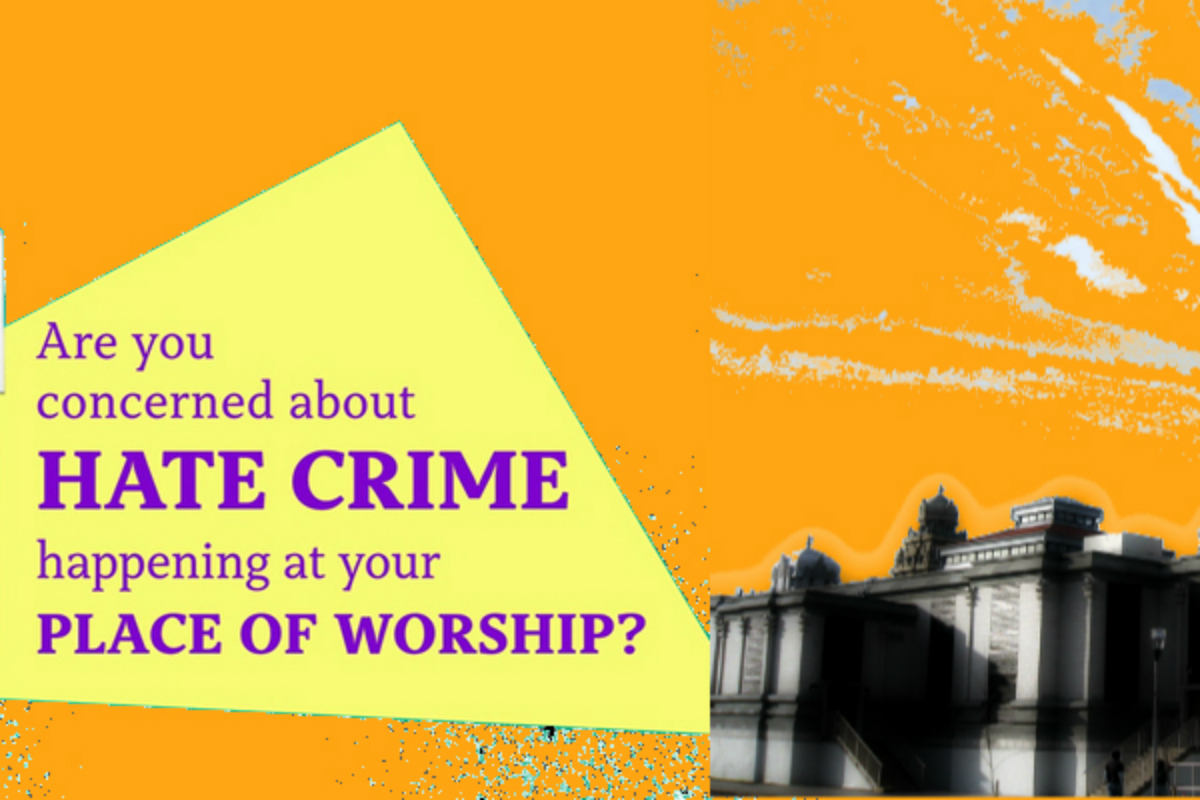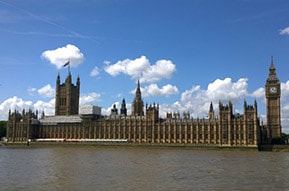"Deciphering the Distinctions: 'Hakenkreuz' vs. 'Swastika'"
"Deciphering the Distinctions: 'Hakenkreuz' vs. 'Swastika'"
1. **Origin and Etymology**:
- "Hakenkreuz" is a German term that translates to "hooked cross" in English. It specifically refers to the symbol used by the Nazi Party during World War II.
- "Swastika" is a term derived from the Sanskrit language, meaning "conducive to well-being." It has a much broader historical and cultural significance, being used in various cultures around the world for thousands of years.
2. **Geographical Association**:
- "Hakenkreuz" is primarily associated with Nazi Germany and its ideology of racial superiority and aggression.
- "Swastika" has been used in numerous cultures across different regions, including India, Asia, Europe, and the Americas, with varied meanings and associations.
3. **Historical Usage**:
- "Hakenkreuz" gained prominence as the emblem of the Nazi Party in the 20th century and became synonymous with their fascist ideology.
- "Swastika" has a much longer history, with evidence of its use dating back thousands of years. It has been used in various contexts, including religious, cultural, and decorative purposes.
4. **Symbolic Meanings**:
- In the context of Nazi Germany, the "Hakenkreuz" symbolized racial purity, Aryan supremacy, and the ideology of the Third Reich.
- The "Swastika" has historically represented different concepts across cultures, including good luck, prosperity, harmony, and spirituality. Its meaning varies depending on the cultural context in which it is used.
5. **Cultural Interpretations**:
- "Hakenkreuz" is predominantly associated with the atrocities committed by the Nazi regime during World War II, leading to its vilification in modern times.
- "Swastika" continues to hold positive or neutral connotations in many cultures, despite its association with the Nazi Party in certain parts of the world.
6. **Legislation and Regulation**:
- Due to its association with Nazi ideology and hate crimes, the use of the "Hakenkreuz" is restricted or prohibited in many countries, particularly in Europe.
- The use of the "Swastika" varies depending on local laws and cultural sensitivities. In some places, it may be regarded as a religious or cultural symbol and used accordingly, while in others, its use may be regulated or banned due to its association with Nazism.
These differences highlight the distinct historical, cultural, and symbolic contexts of "Hakenkreuz" and "Swastika," despite their visual similarity.
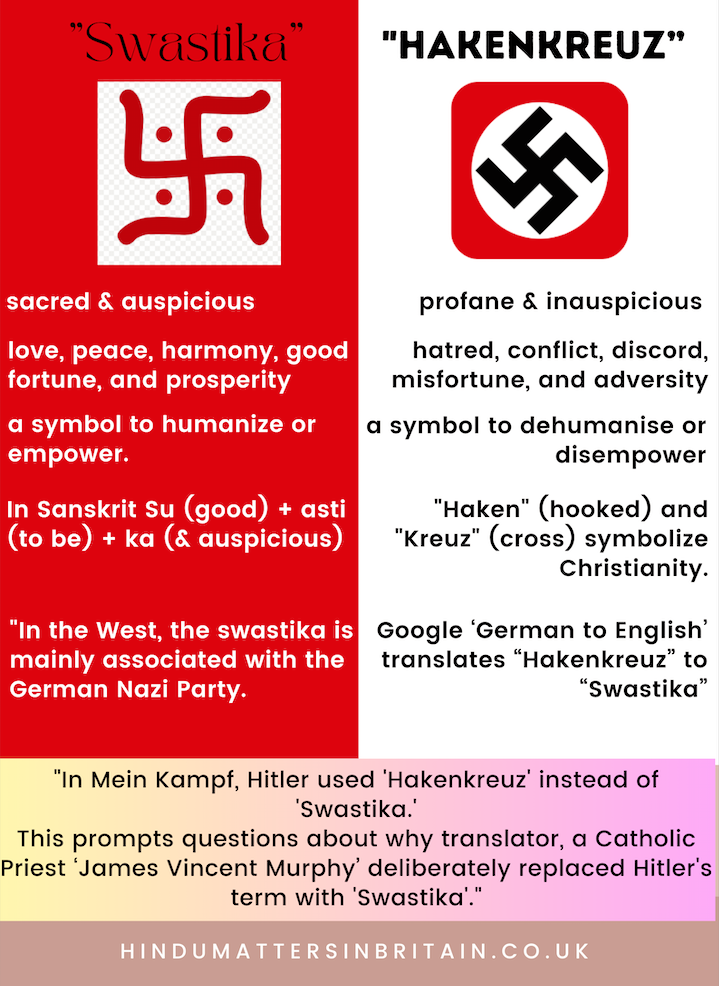
nationalsozialistischen Staat," delves into the legal and religious implications of the Nazi regime's appropriation of religious symbols. This examination underscores the intricate dynamics at play between state power, religious institutions, and societal values during this tumultuous period of history.
In a contemporary context, the 2017 exhibition in Berlin titled "Christenkreuz und Hakenkreuz" further explores the influence of Nazi Socialist ideology on architectural design, particularly in the construction of churches during Hitler's reign. By juxtaposing the Christian cross with the hooked cross, the exhibition prompts viewers to confront the ideological underpinnings of architectural choices and the lasting impact of totalitarian regimes on cultural and religious expression.
Notably, throughout these diverse sources and discussions, the absence of the term "Swastika" is striking. Instead, the focus remains squarely on the interplay between the Christian cross and the hooked cross, emphasising the significance of these symbols within the German socio-political landscape and the broader context of European history.
"On May 1st, 2020, The Times of UK disclosed that the German sector of the Catholic church acknowledged its involvement in the events of the Second World War."
In conclusion, the connections between the Christian cross and the hooked cross in German culture are multifaceted and nuanced, spanning linguistic, historical, and ideological dimensions. By unravelling these connections, we gain a deeper understanding of the complex interplay between religion, politics, and symbolism in shaping collective identity and memory.

Unravelling the Linguistic Origins of the Swastika and the Hakenkreuz -
"Lost in Translation: The Intersection of Symbols and History"
In the complex tapestry of history, language acts as a crucial thread, weaving together narratives that shape our understanding of the world. Yet, there are instances where translation errors or deliberate choices alter the course of history, leading to misunderstandings and misrepresentations. One such case lies in the association between the Swastika and the Hakenkreuz, two symbols that have become deeply intertwined with the rise of Nazism in the 20th century.
"Lost in Translation: The Transformation of 'Hakenkreuz' to 'Swastika’”
The origins of this miss-association can be traced back to Adolf Hitler's infamous manifesto, "Mein Kampf." In this seminal work, Hitler employed the term 'Hakenkreuz' to describe the symbol that would later become synonymous with the atrocities of the Nazi regime. However, in subsequent translations of the text, notably by Catholic Priest James Vincent Murphy, the term 'Swastika' was substituted for 'Hakenkreuz.' This substitution raises intriguing questions about Murphy's motivations and the implications of his linguistic choice.
"Cultural Context and Linguistic Choices: Unraveling Murphy's Motivations"
One possible explanation for Murphy's decision could lie in the prevailing cultural context of the time. In the early 20th century, the Swastika was a symbol with ancient origins, commonly associated with auspiciousness and well-being in various cultures around the world, including Hinduism, Buddhism, and Native American traditions. Its positive connotations stood in stark contrast to the horrors perpetrated by the Nazi regime, leading translators to opt for a term that would distance Hitler's symbol from its benign origins.
"Linguistic Neutrality and Ideological Impact: The Subtle Shift from 'Hakenkreuz' to 'Swastika'"
Moreover, the term 'Swastika' itself carries a degree of neutrality, lacking the sinister undertones associated with 'Hakenkreuz.' By using a more innocuous term, translators may have inadvertently softened the impact of Hitler's rhetoric, obscuring the true nature of his ideology and the atrocities committed under its banner. This linguistic sleight of hand could have served to downplay the severity of Hitler's message, making it more palatable to readers who might otherwise have been repelled by the overt symbolism of Nazism.
"Motives and Manipulation: Unpacking Murphy's Potential Agenda"
However, it is also possible that Murphy's choice was not entirely innocent. As a Catholic Priest, he may have had personal or ideological reasons for sanitising Hitler's language. Perhaps he sought to downplay the religious and spiritual dimensions of Nazism, which often intersected with Christian imagery in its propaganda. By replacing 'Hakenkreuz' with 'Swastika,' Murphy may have aimed to obscure the ideological roots of Nazism, casting it as a secular movement devoid of religious significance.
"Christianity's Grip: Unveiling Hitler's Formative Influences"
Dr. Daniel Rancour-Laferriere, a distinguished authority on Christianity and Professor Emeritus at the University of California Davis, presents a wealth of evidence concerning Hitler's Christian upbringing and the profound influence of Christian symbolism on his psyche. In his seminal work, "The Sign of the Cross: From Golgotha to Genocide," Rancour-Laferriere highlights Hitler's intimate connection to the Hakenkreuz, the symbol adopted by the Nazi party, which may have been deeply rooted in his childhood experiences at the Benedictine Monastery in Austria. Here, amidst the monastery's halls, Hitler encountered the ubiquitous presence of the "hooked cross," repeatedly encountering it in various forms, including a statue of Abbot Theoderich von Hagen adorned with a stylized Hakenkreuz in the coat of arms.
"Lost in Linguistic Translation: Unraveling Symbolic Distortions"
Moreover, Rancour-Laferriere astutely identifies the mistranslation of Hakenkreuz as Swastika, despite its clear etymology for native German speakers, where "Haken" means hook and "Kreuz" means cross. As he keenly observes, "It cannot be disputed that, as a boy, Adolf Hitler repeatedly saw the hooked cross in the Christian context of the Benedictine Catholic Monastery where he had his choir lessons and other classes…" This mistranslation obscures the symbol's Christian origins and its association with Hitler's formative years, thereby distorting its historical significance.
"Echoes of Misinterpretation: Normalising Nazi Symbolism"
Regardless of Murphy's motivations, the consequences of his linguistic choice were far-reaching. By perpetuating the misassociation between the Swastika and the Hakenkreuz, translators inadvertently contributed to the normalization of Nazi symbolism in the public consciousness. Over time, the Swastika became synonymous with fascism and genocide, eclipsing its original meanings and tarnishing cultures that had long revered it as a symbol of harmony and prosperity.
"Reclaiming Symbolic Integrity: The Swastika Proclamation"
"The 'Parliament of World Religions' session deliberated on the historic Swastika Proclamation, publicly introduced on October 16, 2022, by spiritual leaders from Buddhist, Hindu, and Native American traditions throughout North America. While acknowledging the tragic consequences of the Holocaust and other genocides, the Swastika Proclamation asserts that Hitler consistently referred to his symbol as 'Hakenkreuz' (German for 'hooked cross'), distinct from the sacred Swastika, a Sanskrit emblem representing peace and well-being.
"Symbolic Suffering: The Misrepresentation of the Swastika"
The conflation of the sacred Swastika with Hitler’s Cross has inflicted considerable harm on over 2 billion Hindus, Buddhists, Jains, Native Americans, and other Indigenous peoples who cherish and honour the symbol worldwide. Despite this, mainstream media outlets such as the BBC, NYT, Washington Post, Bloomberg, FT, CNN, and others persist in using the term 'swastika' to describe the 'Hakenkreuz,' perpetuating misunderstanding and misrepresentation."
"Linguistic Lessons: Unraveling Symbolic Misconceptions"
In hindsight, the mistranslation of 'Hakenkreuz' as 'Swastika' serves as a cautionary tale about the power of language to shape perceptions and distort reality. It reminds us of the importance of linguistic accuracy and cultural sensitivity in our interpretations of historical texts. By interrogating the origins of such mistranslations, we can strive to unravel the complex web of meanings that underlie symbols like the Swastika and the Hakenkreuz, reclaiming their true significance from the shadows of history.
"The Swastika's Miss-association: A Historical Turning Point"
The website https://cohna.org/hakenkreuz-not-swastika/ highlights a pivotal moment in history: around March 19, 1933, when the New York Times altered its reporting on the symbol known as the "Hooked Cross," labeling it as a foreign emblem from India called the "Swastika." This marked a significant shift in terminology, with a major newspaper introducing a term that would shape public perception of Hitler's hate symbol for decades to come.
This shift in language reflects the beginning of a trend where Western media began associating the Swastika with Hitler, perpetuating false narratives and cementing misconceptions that have endured through various channels such as academia, popular culture, and Hollywood.
In today's world, where perception often holds more sway than facts, the unfortunate consequence is the conflation of a sacred symbol—whose literal translation signifies "well-being" and "auspiciousness"—with the atrocities of the Nazi regime. Despite overwhelming evidence to the contrary, this miss-association persists.
It's crucial to recognise that while the Nazi emblem undeniably represents violence, oppression, and genocide, Adolf Hitler himself never referred to it as the "Swastika." Therefore, the term "Swastika" should exclusively denote symbols and practices within Dharmic traditions like Hinduism, Buddhism, Jainism, and Sikhism.
Hitler's symbol, now synonymous with hate and terror, remains the Hakenkreuz, or hooked cross—a distinction that is vital to preserving the integrity and historical context of both symbols.
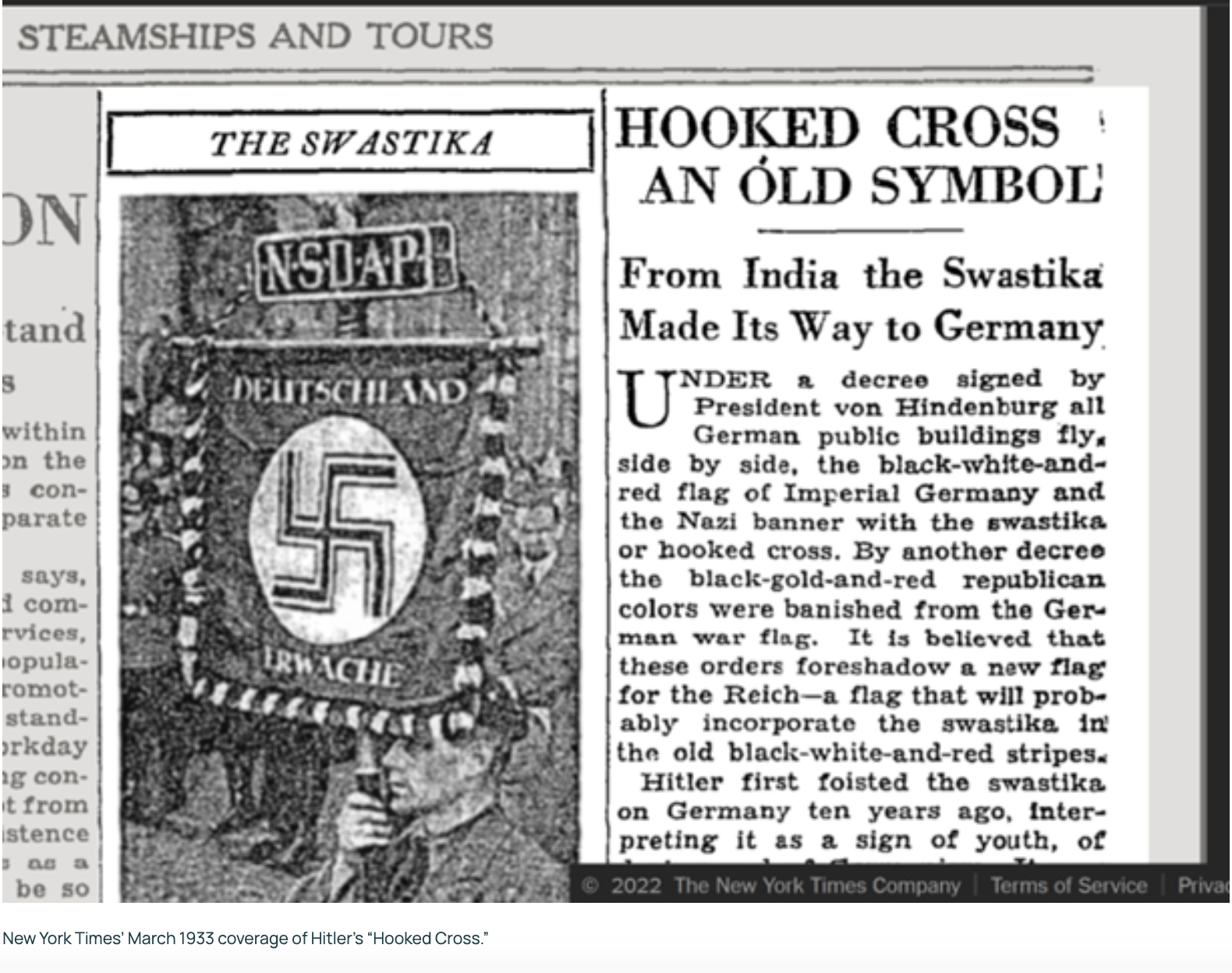
"Championing Change: The Call for Leadership in Ending the Miss-association of Sacred Symbols"
"Rectifying the Miss-association between Swastika and Hakenkreuz"
"The damage caused by wrongly linking the Swastika with the Hakenkreuz is immense. This symbol, revered by approximately 1.5 billion people worldwide for its representation of well-being and peace, is unfairly associated with notions of evil, death, and destruction.
This miss-association fuels bigotry and creates a perilous atmosphere for Hindus, Buddhists, and Jains. It propagates the erroneous belief that their faiths are somehow aligned with Nazi ideology. Moreover, attempts by lawmakers, like those in New York, to classify this sacred symbol as a symbol of hate have far-reaching consequences. It means millions of schoolchildren are taught that a symbol of peace and well-being signifies death and devastation.
This misguided stance could result in a surge of bullying and assaults against students from these religious backgrounds in schools and colleges across the Western world. It also risks exacerbating global Hinduphobia rather than fostering an environment of mutual respect and understanding."
Isn’t time that Lawmakers, Human Rights orgs, USCRIF, Academia, including Harvard Business School's Diversity, Equity, and Inclusion (DEI) initiative, must take the initiative to lead in ending the miss-association of sacred symbols."
Parliament of the World’s Religions: https://parliamentofreligions.org/programs/swastika-proclamation-swastika-is-different-from-hakenkreuz/
The Buddhist Swastika and Hitler’s Cross by T K Nakagaki https://sites.google.com/site/thebuddhistswastikaandhscross/swastika-book?authuser=0
The Sign of the Cross From Golgotha to Genocide by Daniel Rancour-Laferriere: https://www.routledge.com/The-Sign-of-the-Cross-From-Golgotha-to-Genocide/Rancour-Laferriere/p/book/9781138516915
Wrongfully accused: The Swastika is Not Hitler’s Hakenkreuz: https://cohna.org/swastika-is-not-hakenkreuz/
